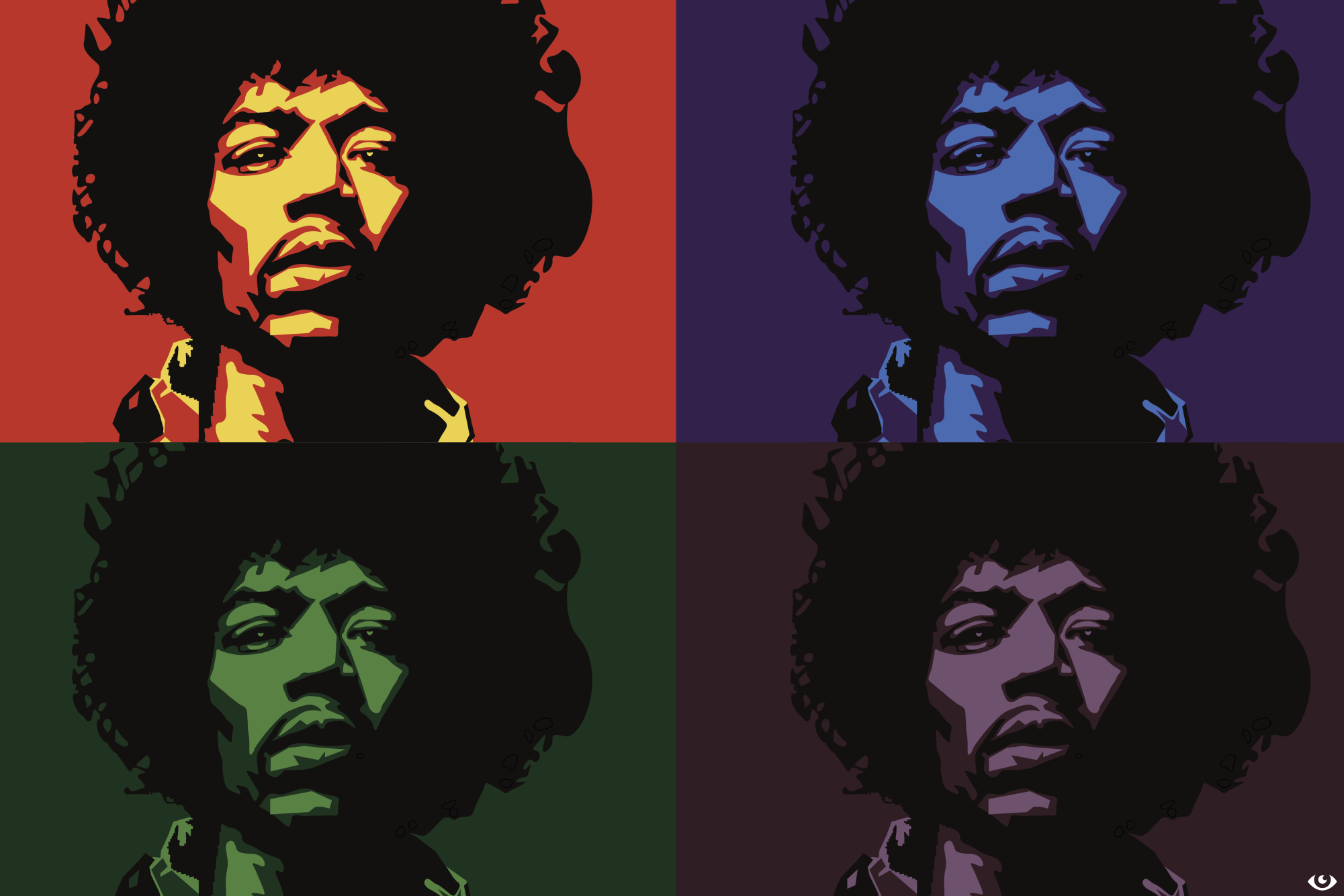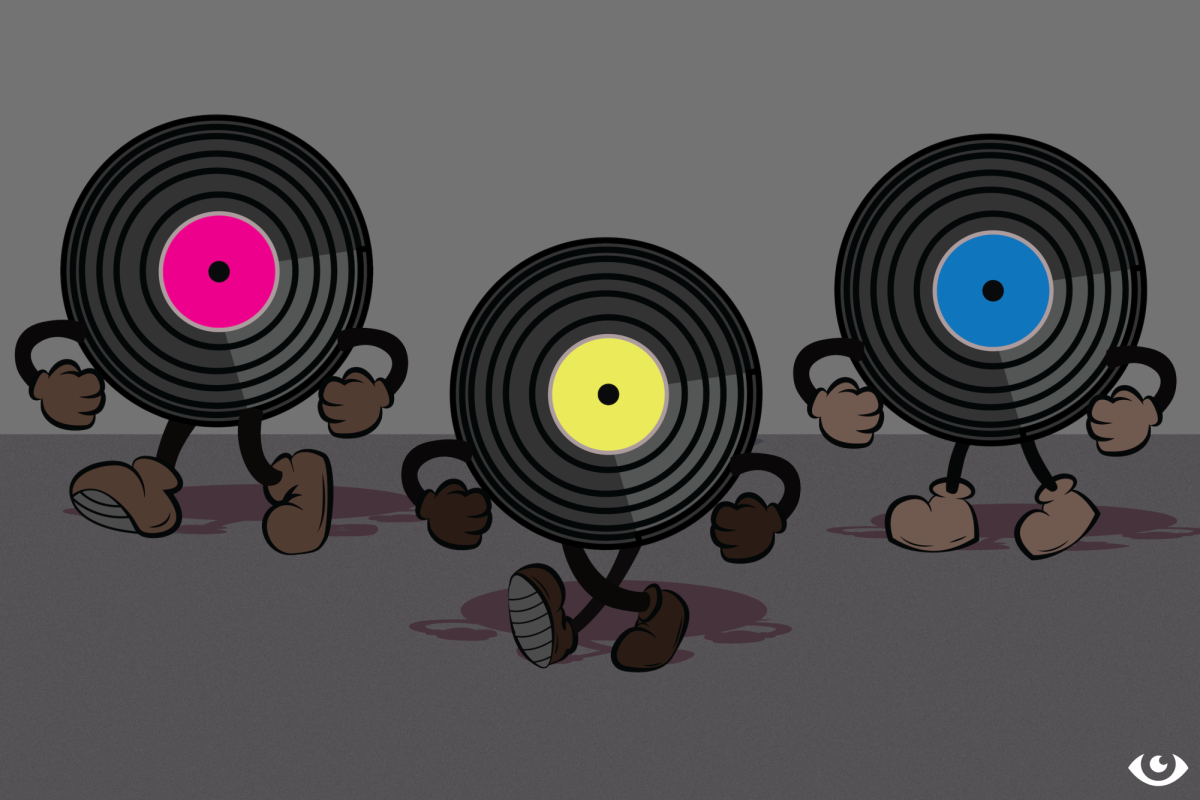In 1992, Jimi Hendrix was cemented in music history when he was inducted into the Rock and Roll Hall of Fame. 32 years later, he is still regarded as the greatest guitarist of all time, and one of the most talented instrumentalists the world has ever seen. Through his music, Hendrix was able to express himself and introduce others to the growing popularity of psychedelic rock.
Born in Seattle in 1942, James Marshall Hendrix had a rough childhood. His father, James “Al” Hendrix, was drafted into the US army to serve in WWII shortly after he married Lucille Jeter. Al was denied parental leave, and was instead sent a telegram informing him of his son’s birth. Because of her husband’s absence, Lucille Hendrix struggled to take care of Jimmy and was forced to send him to live with their relatives. Al didn’t end up meeting his son until three years after he was born.
Even though Al had returned from service, taking care of Jimmy didn’t get any easier. Al being unable to find much work, their family was left impoverished. Al and Lucille struggled with alcohol abuse and often fought. This led to their divorce when Jimmy was 9 years old, and his father gaining custody.
Hendrix’s childhood left him yearning for a passion. As a child, he would pretend to play guitar on a broom while listening to artists such as B.B. King and Muddy Waters, some of the prominent Blues musicians of the time. Eventually, Hendrix purchased a second hand acoustic guitar from one of his friends for $5. This allowed him to form his first band, The Velvetones, which he played in for just around three months. After he left the band, his father gifted him his first electric guitar, a Supro Ozark 1560S. After it was unfortunately stolen, his father gifted him a red Silvertone Danelectro as a replacement.
Eventually, Hendrix ran into troubles with the law and had to serve in the Army in order to stay out of prison. At 19 years old, Hendrix was stationed at Fort Campbell, Kentucky. However, he neglected most of his duties and instead focused on playing music. One of Hendrix’s fellow servicemen, Billy Cox, took note of his talent and began playing with Jimmy as a bassist at different military bases on the weekends.
Later, Hendrix was honorably discharged because of his lack of commitment to the Army and failure to uphold his duties. Hendrix and Cox formed a band called the King Kasuals and moved to Tennessee. Beginning in Clarksville, the band ended up in Nashville because of its thriving rhythm and blues scene. Here, Hendrix toured the South and played with some notable music icons of the time, including Ike and Tina Turner, Jackie Wilson and Sam Cooke. However, with most of these bands Hendrix was cast as a sideman, which left him feeling restricted and underutilized. He desired to play a bigger role in the music he was performing.
In 1966, Jimmy Hendrix moved to Greenwich Village in New York City which featured a more diverse music scene. There, Hendrix formed yet another band called Jimmy James and the Blue Flames where he was finally the headlining act. This is when Hendrix began developing his playstyle and perfecting his sound. After performances at various clubs around New York, he was presented with an exciting new opportunity.
Hendrix’s style enticed Chas Chandler, the bassist for the band The Animals. After discussions and agreements, Hendrix agreed to move to London and created what would become his legacy as a musician. After searching for new members, he enlisted the help of bassist Noel Redding and drummer Mitch Mitchell to form The Jimi Hendrix Experience. At this time, Chandler also convinced Hendrix to change his first name from Jimmy to the now iconic ‘Jimi’.
The band’s first single,”Hey Joe,” became immensely popular in England, entering the United Kingdom (UK) charts and peaking at number six. The band’s first full album, “Are you Experienced,” continued to gain traction and boosted Hendrix into the music scene.
Hendrix’s first long play (LP) with his new band remained on the UK music chart for 33 weeks, peaking at number 2. It was only beat out by The Beatles’ album, “Sgt. Pepper’s Lonely Hearts Club Band.”
Songs such as “Purple Haze” and “The Wind Cries Mary” blended classic rock with psychedelic aspects and many other musical influences that gave Jimi and his band a unique sound. After major success in the UK, Hendrix eventually moved back to the United States.
With endorsement from legendary musician and songwriter Paul McCartney, The Jimi Hendrix Experience performed at the Monterey Pop Festival in California, which began Hendrix’s fame in the United States. Hendrix left a lasting impression on the American audience after showcasing his musical talents, and ending the show by setting his guitar on fire on stage and throwing pieces of it into the audience.
After his success and critical acclaim, Hendrix opened a recording studio in New York City called Electric Lady Studios. There, Jimi Hendrix devoted his time to his most ambitious project yet, the album “Electric Ladyland.” This project became his top priority and pushed him to his creative limits. Hendrix became a perfectionist and started experimenting with guest features and constantly repeated takes. This took a toll on the band, as Hendrix’s obsession became too much for many of the band members and they broke up. This resulted in the album featuring many different musicians on drums and bass other than Redding and Mitchell.
The album released on Oct. 16, 1968 and became the first record from The Experience produced by Hendrix alone. It topped the charts in November, and spent two weeks at number one.
“For pure experimental genius, melodic flair, conceptual vision and instrumental brilliance, Electric Ladyland remains a prime contender for the status of rock’s greatest album,” said Peter Doggett, author of “Jimi Hendrix: The Complete Guide to His Music.”
A year later, Hendrix became the highest-paid rock musician in the world. Because of his band’s split, Hendrix was thriving as a headliner in various ensembles of musicians. In 1969, Hendrix headlined the Woodstock music festival in New York, and performed the Star Spangled Banner in front of about 200,000 people. This became Hendrix’s most famous performance and a defining moment of the late 60s.
Yet, like many famous musicians of his time, Hendrix struggled with substance abuse. Psychedelic rock was widely popular because it imitated the feeling of taking hallucinogenic drugs like LSD. As a result, many rock musicians struggled with addiction. Hendrix succumbed to drug-related asphyxia and tragically died on Sept. 18, 1970 at the age of only 27.
While Hendrix had a short career, his effect on the music world is still felt to this day. Despite a turbulent childhood and a tragic end to his life, Hendrix still managed to leave a mark on musical history. His music defined the culture of the late 60s in America and is still regarded as the greatest guitarist of all time.








